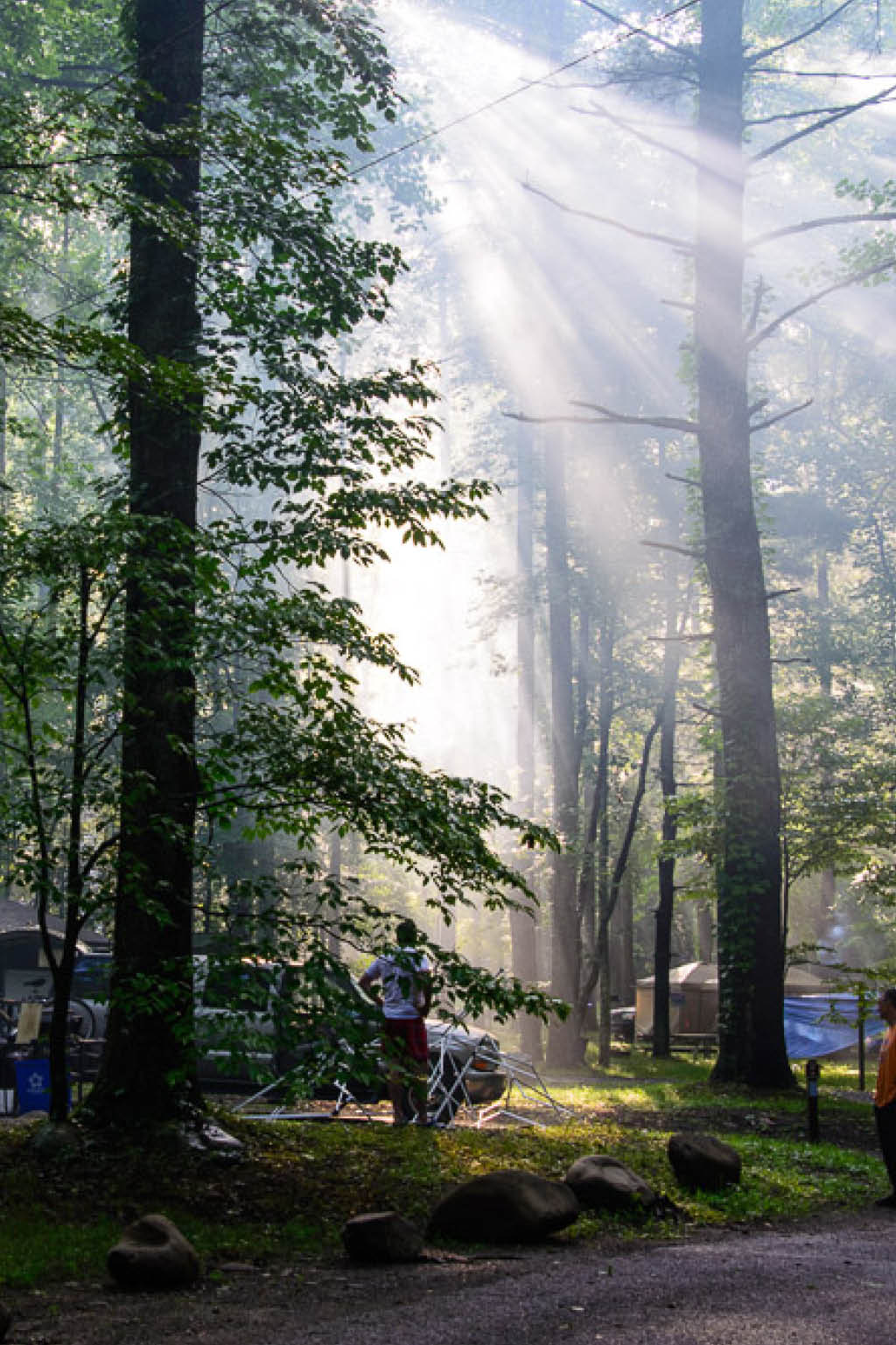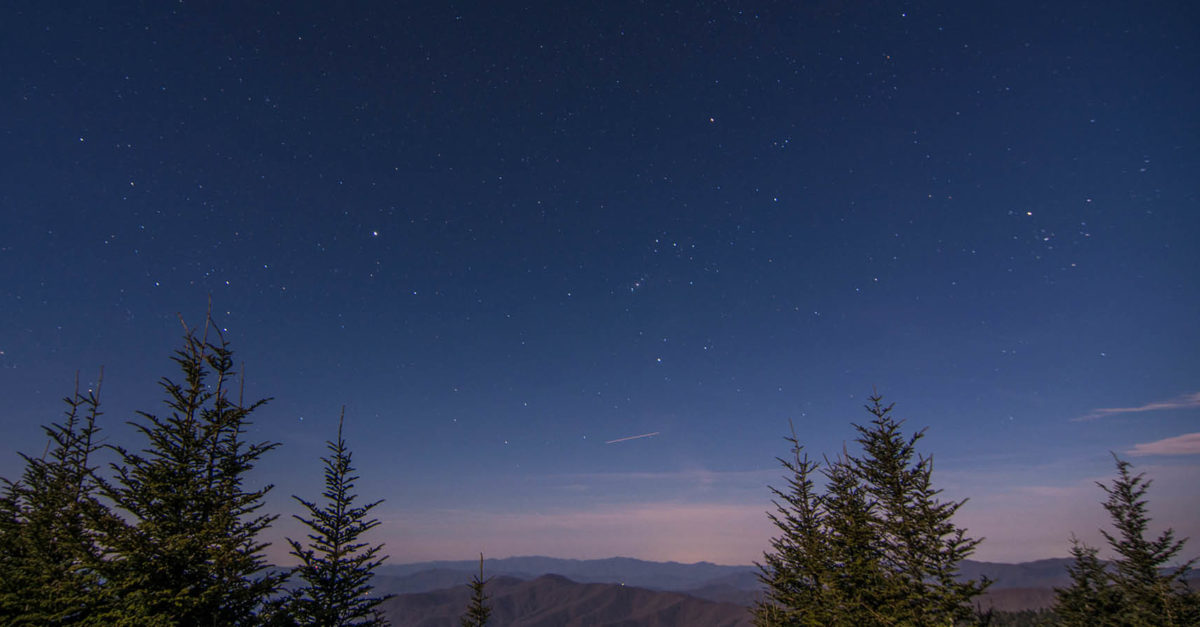America’s Resilient Range
Droughts, fires, and other immense environmental changes have all transformed the southern Appalachian Mountains for over 400 million years. These mountains have had to withstand dramatic and sometimes catastrophic events, and yet they remain as strong and awe-inspiring as ever. It’s these changes that have helped make the ecosystem in this part of the country incredibly diverse, with thousands of different plant and animal species thriving throughout the Great Smoky Mountains—a subrange of the Appalachians that runs through parts of Tennessee and North Carolina.
The people, customs, and traditions of the Smokies were shaped, in large part, by its dramatic landscape
and history, and the area has even been designated a UNESCO World Heritage site. Though many people think of the West when they think of America’s most picturesque mountains, Great Smoky Mountains National Park attracts more visitors than any other national park in the country.
A place among the flowers
Over 1,600 species of flowers, fauna, and trees make up the landscape of the Smokies. Their natural beauty draws millions of visitors each year, but one flower-focused event in particular has enticed budding and experienced botanists, photographers, artists, and others for over half a century.
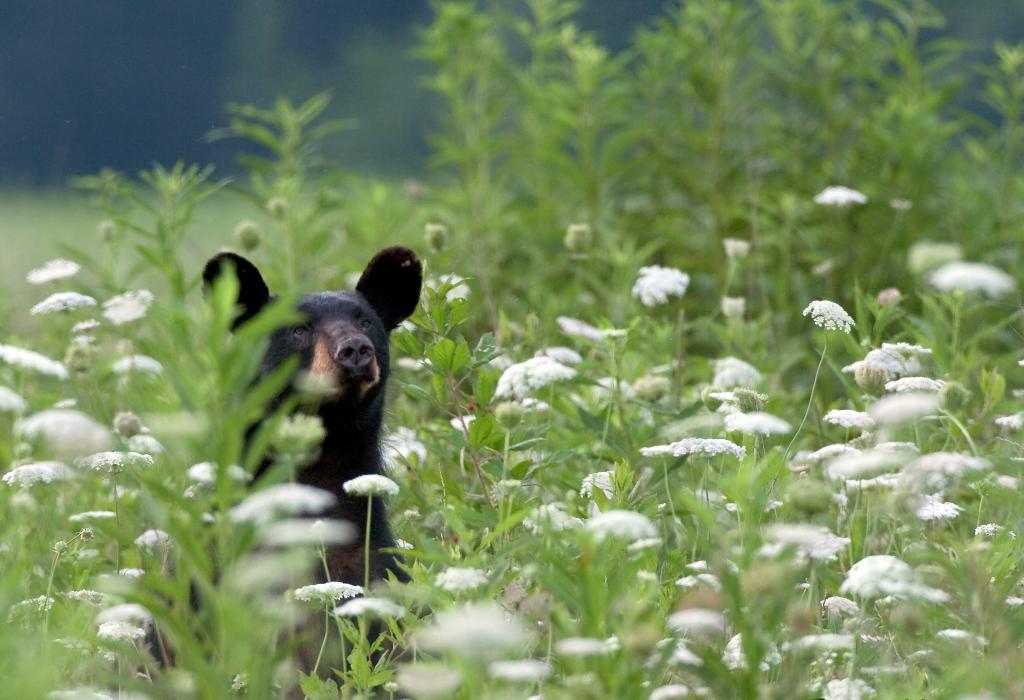
The Wildflower Pilgrimage began in 1951 in Gatlinburg, Tennessee, as a way for the Gatlinburg Chamber of Commerce to promote visitors for the annual budding of local spring wildflowers. The first event offered ten different programs—mostly for people interested in the science behind the bloom—and was extremely successful. Because of its initial success, the chamber of commerce decided to hold the event again in 1952 but opened additional programing geared toward photographers and other artists.
Since its beginnings, Wildflower Pilgrimage organizers have treated the event as an opportunity to inspire and educate, and over the years have expanded its offerings to now include over 150 programs across a wide variety of disciplines. The hikes run the gamut from moderate one-mile treks that are ideal for families with children, to strenuous multimile hikes that are geared toward more experienced hikers.
“We have people from eight months to eighty years old attend these programs,” says Dr. Joey Shaw, an organizer of the pilgrimage and a professor of biology, geology, and environmental science at the University of Tennessee at Chattanooga. “And in the last few years we’ve had over 800 pilgrims, as we like to call them, over the four days of the event.”
Dr. Shaw says that because of the diversity of the programming during the Wildflower Pilgrimage, no one event is more popular than another. People sign up for the events that are most interesting to them, and the options are seemingly endless.
In 2018, some of the programs offered included a bird-sketching lesson with artist Chris Myers, a black bear and wild hog walk, a nighttime bat walk, a forest forensics walk to explore human impact on the mountains, and dozens of wildflower walks along the park’s various trails. According to Dr. Shaw, children always enjoy the animal-specific walks, like the Salamander Walk, during which the program leader will encourage hikers to turn over rocks to uncover some of the creatures that live hidden in the forest.
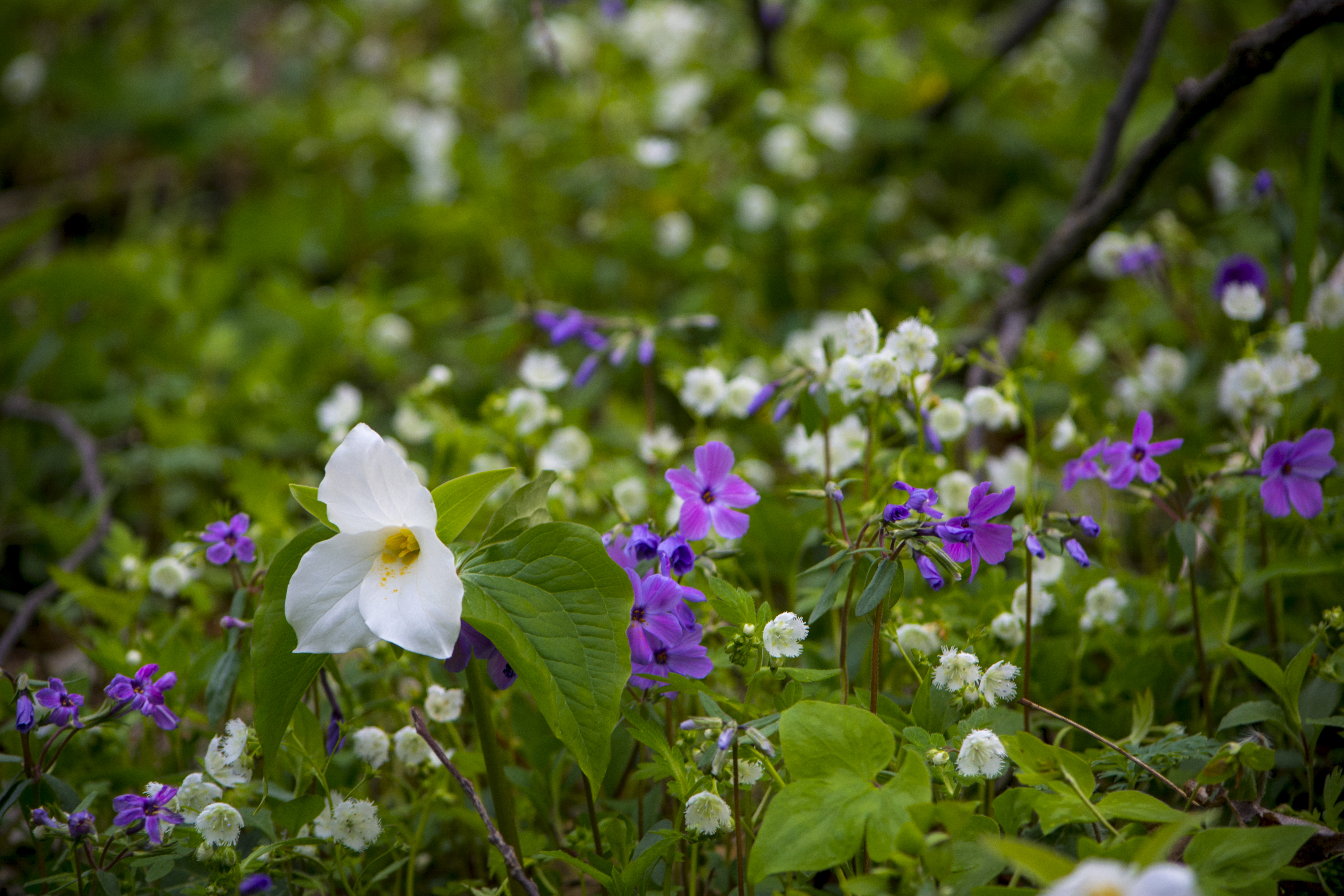
Some of the most exciting programs occur after hours, when the often unseen wildlife of the Smokies is more active. Bugs at Light is a moonlit walk (hikers are encouraged to come with a headlamp or flashlight) that uses a black light to illuminate nocturnal creepy crawlers. And the Night Owl Prowl, led by expert naturalists and birders, showcases some of the mountains’ flying predators. “These programs are led by experts in their field, so hikers really have their eyes open to all there is to see—things they may otherwise not notice,” says Dr. Shaw.
Because of demand for these programs, the window for registration is only open for a short time, but it typically begins in late February or early March, and in 2019, the pilgrimage takes place April 23–27. Though 70 percent of programming remains the same from year to year, Dr. Shaw says it’s always wise to look at the current year’s brochure for standout events based on more timely topics. When sections of the park were damaged by a wildfire in 2016, special programs were added to discuss the fire’s impact. Some of these programs are still offered.
A wild outing
There are hundreds of different animal species that call Great Smoky Mountains National Park home, but the most recognizable symbol of the park—and one that park visitors are likely to encounter—is the black bear, whose population in the park is around 1,500.
Because of the close proximity to a number of colleges and universities, including the University of Tennessee, the park is a hub for scientific research and exploration, especially when it comes to the black bear population. This research has led to a surge in black bear numbers in recent years, bringing the species back from just a few hundred bears in the early nineteenth century. The population increase is positive for the bears as well as park visitors, who are eager to catch a glimpse of them in their natural habitat. However, this increased interaction can put both bears and humans at risk.
Intentionally feeding the black bears or neglecting to store food and other campsite items properly can cause the bears to consume human food, making them sick, and can also make the bears more brazen. Thankfully, there are a number of organizations that promote increased awareness for the park’s black bear population, such as Friends of the Smokies, which also raises money for wildlife protection.
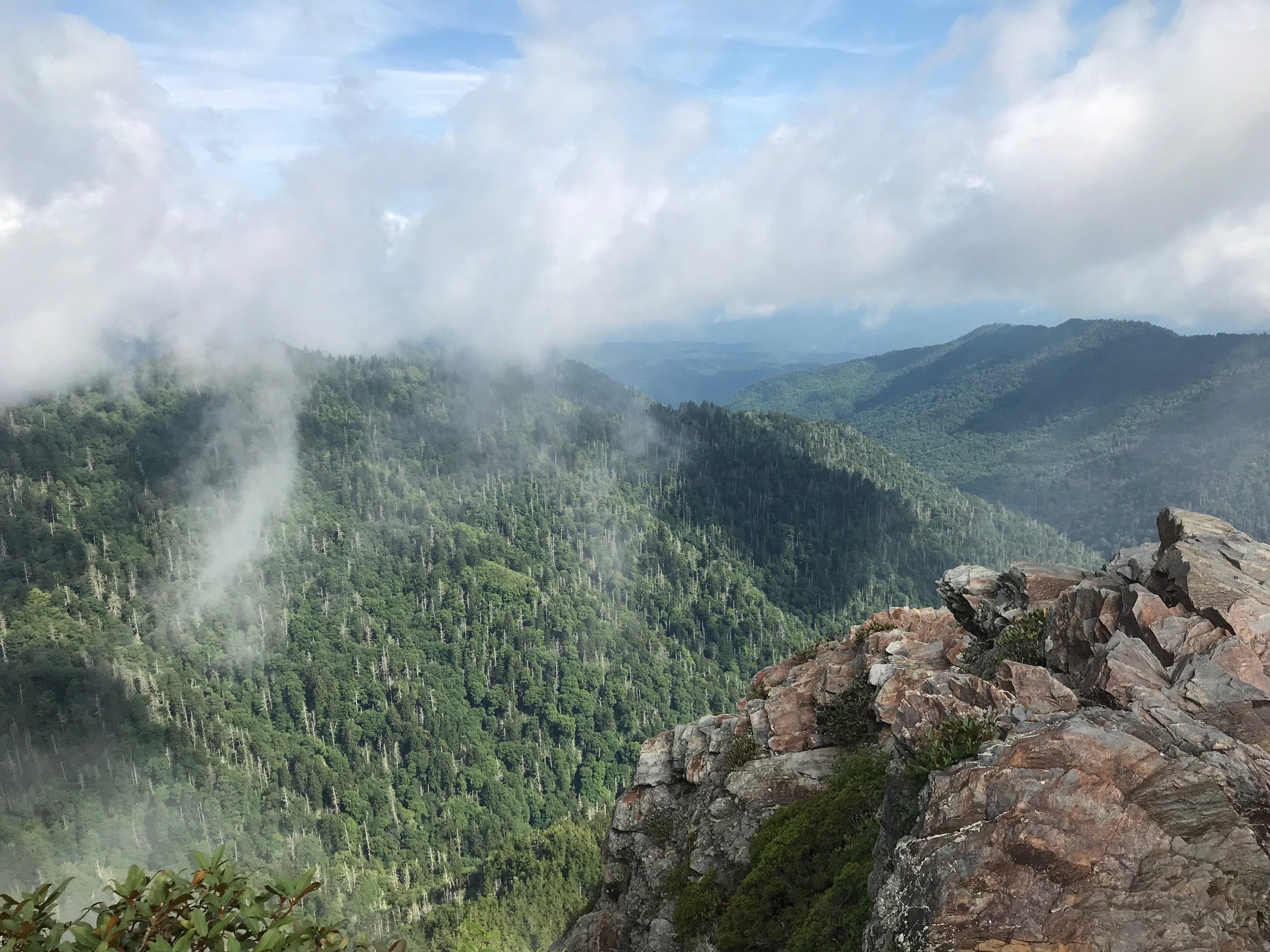
While the bears are a huge draw, the park is home to a number of other mammals such as elk, bobcat, and species of fox, but it’s something much smaller that is attracting almost as many visitors as the iconic black bear.
The gathering for the mating of the synchronous fireflies in Elkmont, Tennessee, each spring has been bringing people to the Smokies for centuries. People who live in the eastern United States and see fireflies every year may wonder why anyone would want to venture into a crowded park just for a firefly viewing party, but the synchronous fireflies are truly exceptional.
If you’ve ever looked out on a field of these glowing beetles, you may have noticed that they will not light up at the same time but create an ever-changing sea of light as they flash in bright yellow intervals. Because the fireflies around the Smokies are synchronous, their flashing is a sight to behold, as they glow in unison and transform the dense green forest into a golden sanctuary.
For many families, watching the synchronous fireflies is a tradition that has been passed down, but according to the National Park Service, it’s such a popular attraction that they’ve had to limit the number of people entering the park for the event. There is currently a lottery system in place, which opens a few months in advance—typically in late April—and awards roughly 1,800 lucky applicants a vehicle entrance pass into the park for the viewing. The viewing typically takes place near the Sugarlands Visitor Center, just outside Gatlinburg.
The people’s park
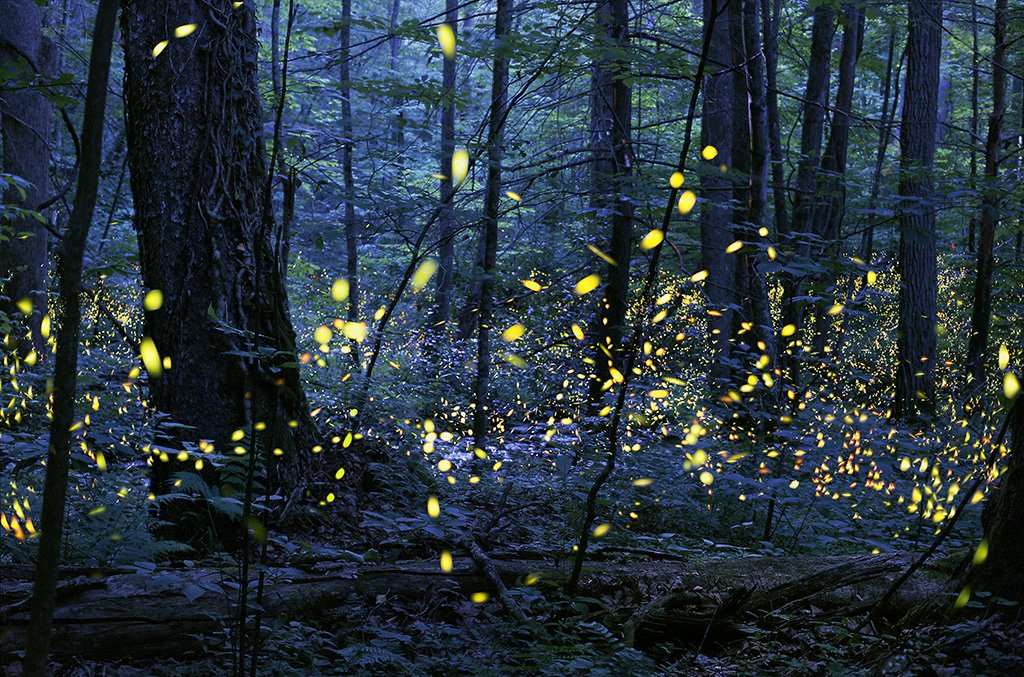
The millions of visitors who witness the majesty of Great Smoky Mountains National Park each year can attest to its appeal as so much more than a tourist attraction. There are elements of wonder within the park that appeal to people young and old, science lovers and artists, avid hikers and wide-eyed bird-watchers. No two visitors will have the same experience.
The Smokies are truly America’s wise old mountains—knowledgeable, enduring, and full of answers to life’s most pressing questions.
For more info, visit visitsmokies.org or nps.gov/grsm.
